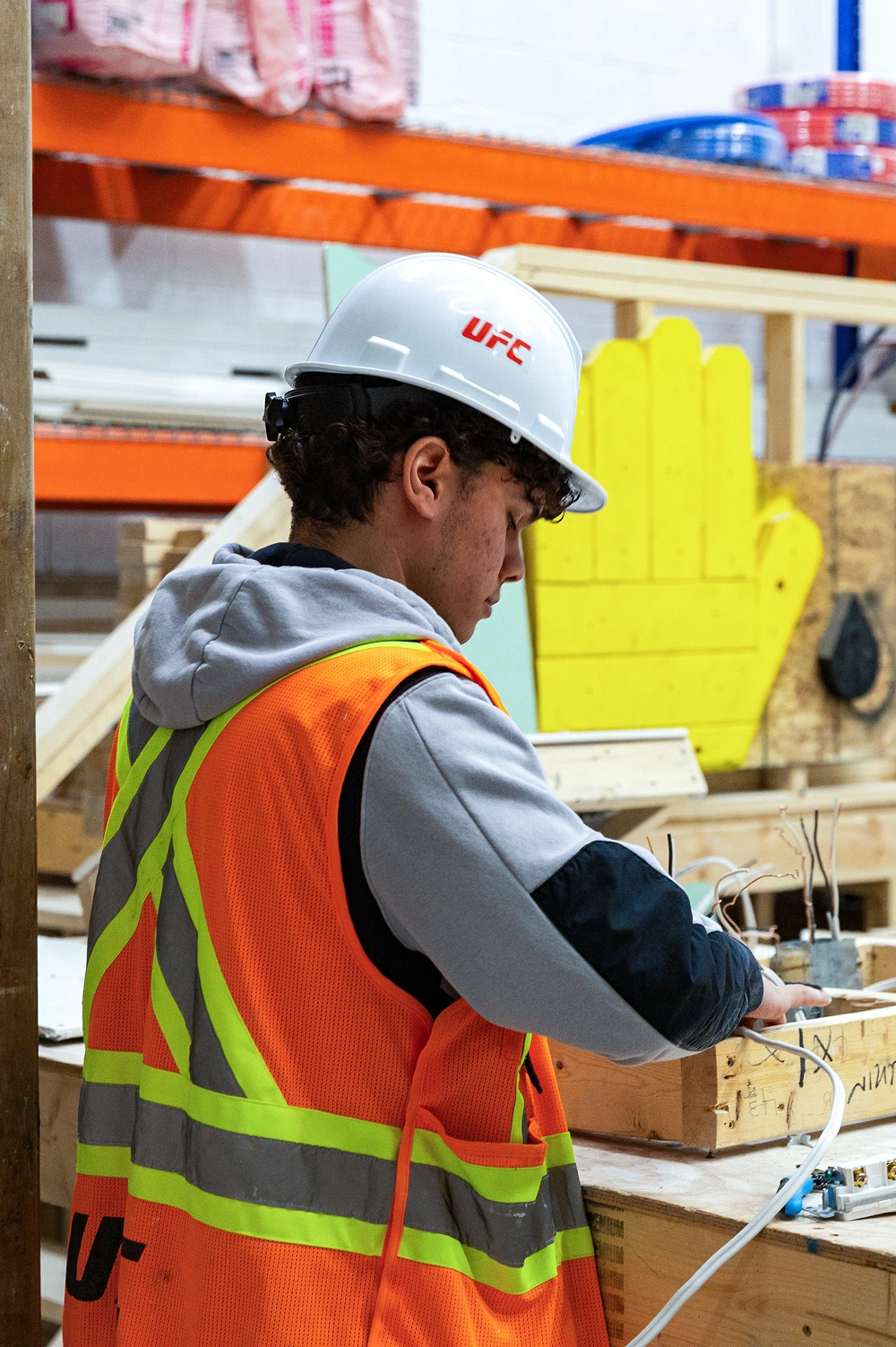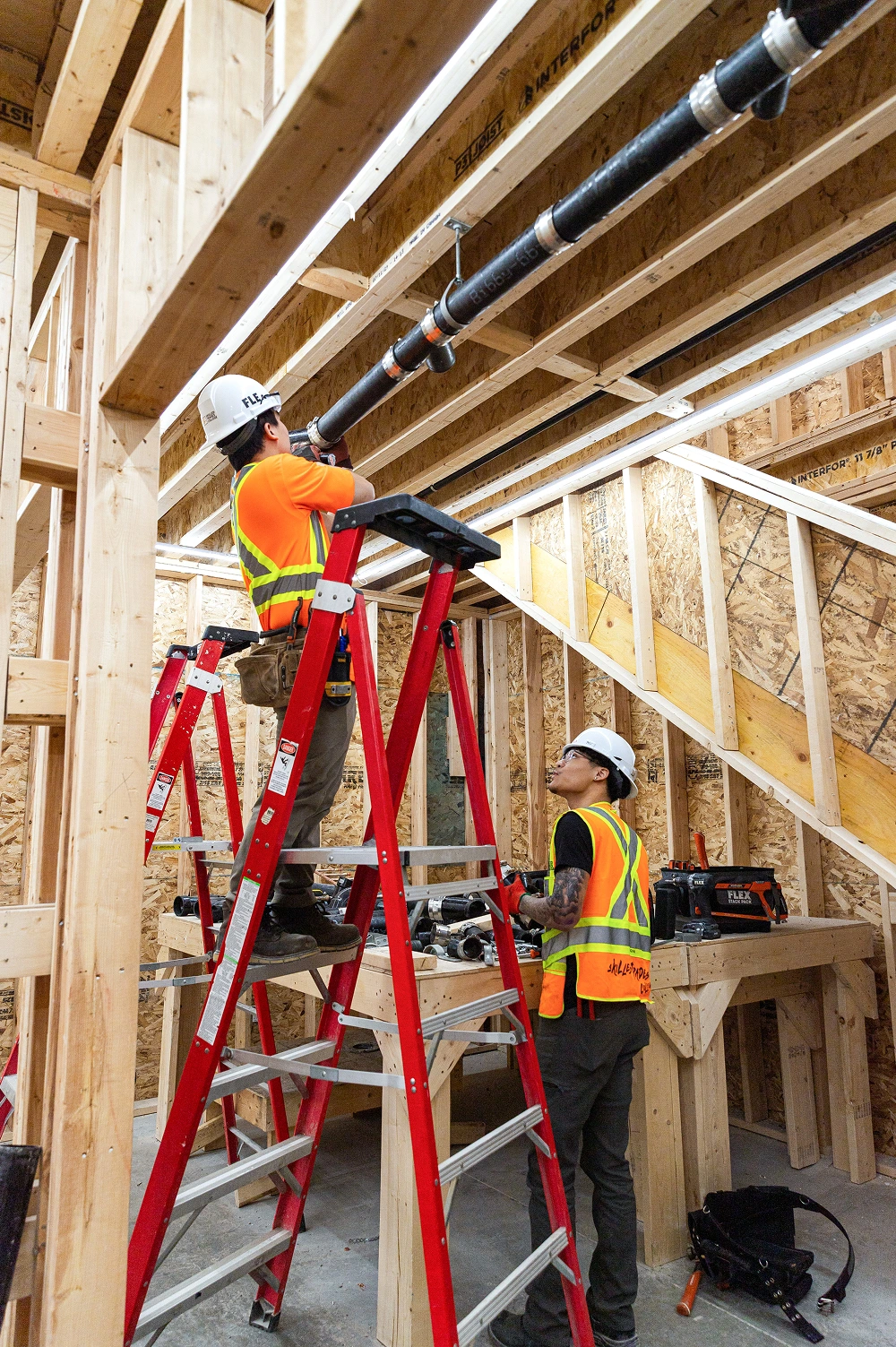8 Different Types of Carpentry Jobs to Consider

Published On
2025-6-11

Turning your DIY skills into a skilled trades career path involves assessing your skills, undergoing training, completing an apprenticeship, and advancing your career. Getting a pre-apprenticeship can help you fast-track your career change by teaching each trade’s basic foundations.
Many DIY enthusiasts hesitate to turn their hobbies into careers, even when they possess the skills to succeed, worried that going professional might detract from the fun. But what if we told you switching from DIY to professional trades doesn’t have to kill the joy?
Skilled workers in Canada are in high demand, earn great pay, and are free to choose the kind of career they want, whether that means steady employment or being their own boss. Many of them, like you, started out fixing leaky faucets, building furniture, or painting their rooms.
So, if you have DIY experience, you’re already one step down the skilled trades career path. Achieving excellence is only a matter of obtaining the proper training, certifications, and guidance. We’ll show you how you can turn what you love into a career you’re proud of—step by step. Let’s get into it!
A skilled trades career path can encompass a wide range of fields, including electrical work, plumbing, carpentry, and home renovation. Many DIYers are jacks of all trades with broad interests, who understandably hesitate at picking the one trade they want to pursue professionally.
If this sounds like you, here’s our tip: start with what you’re good at. Assess your skills and identify those that you enjoy and could realistically develop into a career. Think about your past projects and write down:
Pro tip: Sometimes, you won’t know whether electrical, plumbing, or something else entirely is your calling until you get full exposure. When in doubt, consider starting with pre-apprenticeship programs or shadowing experienced professionals to gauge your interest.

You can go from DIY to professional trades in many ways, but most require hands-on training, licenses, or certifications before you can work independently. For construction trades, especially, registered apprenticeships are often mandatory, and securing one typically requires basic qualifications and training.
Depending on your chosen trade and location, you might have to:
Where’s the best place to start? If you’re unsure which skilled trades career path to take or don’t feel confident jumping straight into an apprenticeship, the pre-apprenticeship programs Canada trade schools offer are your best bet. Learn more about them in the next section!
Yes, there are pre-apprenticeship programs in Canada for DIY enthusiasts. These short-term programs (usually around 12 weeks or so) offer hands-on training and job shadowing opportunities to help you bridge the gap between DIY and professional trades.
Often, hobbyists acquire their skills through trial and error, online articles, or YouTube tutorials. While these can be great for building interest and basic know-how, they sometimes fall short of professional standards, especially in terms of safety protocols or building codes.
Pre-apprenticeship programs are designed to prepare students for the reality of a skilled trades career path. They help you:
Many of the pre-apprenticeship programs offered by Canadian trade schools also provide job placement assistance and other career support services.
💡Related Resources:

After completing a pre-apprenticeship and finding your trade, the next step in the skilled trades career path is a registered apprenticeship. This is where you’ll learn directly from experienced professionals, get paid while training, and work toward becoming fully certified.
The process typically takes between one and five years. Here’s what it entails:
That said, not every role in the construction industry requires an apprenticeship or trade certification. Some entry-level jobs or general labour positions may let you start working right away, especially if you showcase the right skills and complete a pre-apprenticeship program.
However, formal training and apprenticeship typically lead to higher wages, better job security, and long-term career growth opportunities.
You’re now a certified journeyperson. What's next? Certified skilled workers can further advance their careers by:
No, DIY home projects don’t count toward apprenticeship hours. What counts depends on your apprenticeship agreement, but it typically involves:
Training from hobbyist to certified tradesperson typically takes anywhere from two to five years through a formal apprenticeship. If you can prove significant, verifiable work experience equivalent to a journeyperson’s level, you may be certified faster through trade qualifiers or experienced worker programs without completing a full apprenticeship.
Woodworking skills align best with carpentry, cabinetmaking, and millwork careers, while electrical DIY skills translate well into electrician apprenticeships, maintenance electrician, renewable energy installations, and more. If you have both, general contracting or renovation work could be your calling!
Two in five Canadians say they’d choose a skilled trades career path if they could go back in time. But you don’t need to wait another lifetime to get your construction career started.
Enrol in Skilled Trades College of Canada’s pre-apprenticeship programs designed for DIY enthusiasts and career changers. We offer 12-week courses in electrical, plumbing, home renovation, HVAC, and more—all taught with 80% hands-on training and 20% classroom instruction.
Our state-of-the-art facilities and experienced instructors give you the practical experience and industry insights you need to hit the ground running. You’ve got the DIY skills, now get the training. Enroll today and start your future in the trades!
9,281+
LIVES CHANGED

12,481+
WIRES PULLED

85,382+
2X4'S CUT

9,756+
PIPES LAYED

9,281+
LIVES CHANGED

12,481+
WIRES PULLED

85,382+
2X4'S CUT

9,756+
PIPES LAYED

9,281+
LIVES CHANGED

12,481+
WIRES PULLED

85,382+
2X4'S CUT

9,756+
PIPES LAYED
